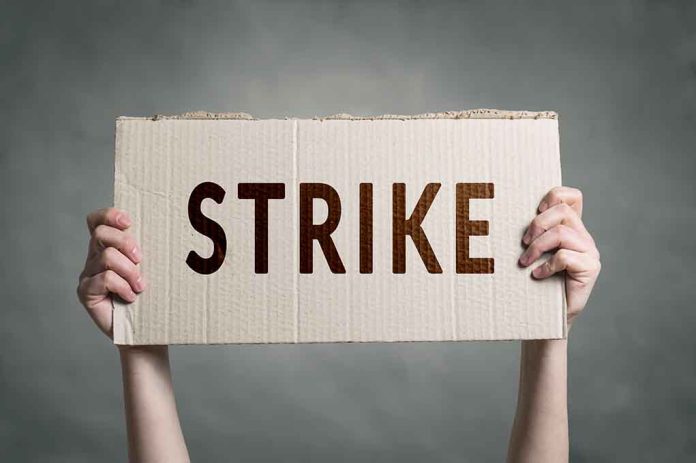
A massive dockworkers’ strike at major East and Gulf Coast ports threatens to disrupt the U.S. supply chain and economy, potentially leading to shortages and price hikes for various imported goods.
At a Glance
- About 45,000 dockworkers are striking at major East and Gulf Coast ports, the first such strike since 1977.
- The strike could lead to shortages and increased prices for imported goods, including bananas, electronics, and automobiles.
- Negotiations between the International Longshoremen’s Association and the United States Maritime Alliance have stalled over wages and automation concerns.
- President Biden has indicated he will not intervene using the Taft-Hartley Act.
- The strike’s duration will determine its impact on consumers and the U.S. economy.
Strike Causes and Immediate Effects
The International Longshoremen’s Association, representing about 45,000 dockworkers, has initiated a strike at major ports from Maine to Texas. This action comes after the expiration of their contract with the United States Maritime Alliance, despite some progress in negotiations. The union is demanding higher wages and a ban on automation of port equipment, highlighting the ongoing tension between labor and technological advancement in the maritime industry.
The strike has shut down crucial ports including Baltimore, Philadelphia, New Orleans, Boston, and New York/New Jersey, among others along the East Coast and Gulf Coast. This widespread closure is already causing concerns about potential shortages and price increases for a variety of consumer goods.
From @Breakingviews: A strike by US dockworkers threatens to cost the economy $5 billion daily. With just over a month to go before the election, Democrats are wary of angering their union allies. But shortages and price spikes aren’t an option either, explains @rubinations pic.twitter.com/CdZlu3TpOY
— Reuters (@Reuters) October 1, 2024
Potential Economic Impact
The economic repercussions of this strike could be significant, especially if it continues for an extended period. Experts warn that a prolonged strike could lead to noticeable shortages within two to three weeks. The ports affected by the strike handle approximately half of the country’s trade in cargo containers, underscoring the potential for widespread disruption.
“Within two to three weeks you should start seeing shortages,” Andrew Coggins, a clinical professor of management and management science at Pace University’s Lubin School of Business, told CBS MoneyWatch.
The strike’s timing is particularly concerning as it coincides with ongoing supply chain challenges, including Houthi attacks affecting the Red Sea and Suez Canal. This combination of factors could exacerbate existing supply chain issues and potentially lead to more severe economic consequences.
Impact on Specific Industries and Products
Various industries are expected to feel the impact of this strike. The toy industry, which relies heavily on fourth-quarter sales, could face significant challenges. Up to 60% of annual toy sales occur during this period, potentially leading to shortages and higher prices during the crucial holiday shopping season.
Food products are also likely to be affected, particularly those imported from outside the U.S. Bananas, a staple in many American households, could become scarce as more than 75% of U.S. bananas arrive through the affected ports. Other items at risk include seafood, coffee, and various fruits and vegetables.
“Each day that this goes on it creates a backlog of containers and ships,” American Farm Bureau Federation economist Daniel Munch said.
The automobile industry might experience immediate impacts, with potential delays in new car deliveries. Additionally, beverages such as beer, wine, whiskey, and scotch could face shortages or price increases.
Broader Economic Implications
The strike’s effects extend beyond consumer goods. American farmers who rely on these ports for exporting soybeans and poultry could face significant challenges. Approximately 14% of U.S. waterborne agricultural exports are at risk, with potential disruptions valued at $318 million over just a one-week period.
Puerto Rico could face more severe consequences, as over 85% of its food comes from the mainland U.S. through affected ports. This situation highlights the vulnerability of dependent territories to mainland labor disputes.
As the strike continues, its impact on inflation and the broader economy remains a concern. The disruption in the supply chain could lead to increased prices across various sectors, potentially contributing to inflationary pressures that have already been a significant economic concern in recent years.














